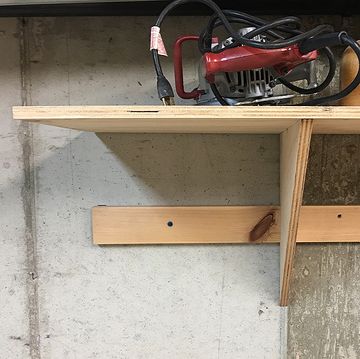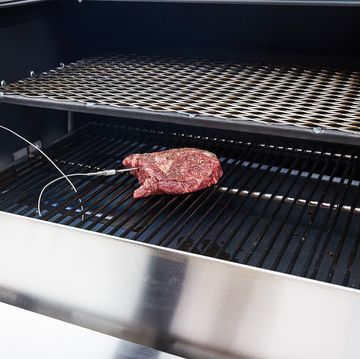6 Surprising Sources of Home Air Pollution
Indoor air pollution often makes the air inside homes more unhealthy to breathe than air outdoors.
By Dan Shapley

Indoor air pollution often makes the air inside homes more unhealthy to breathe than air outdoors.
1
Media Platforms Design Team
Indoor Air Pollution Can Kill

The most widely quoted statistic about air quality is this: The Environmental Protection Agency estimates that indoor air can be two- to five-times more polluted than the air outdoors. And while the EPA is responsible for cracking down on outdoor pollution -- the smog, ozone and other chemicals that spew from tailpipes and smokestacks -- protecting the air indoors is largely the responsibility of homeowners.
And while many sources of indoor air are fairly obvious and well-known -- second-hand smoke, carbon monoxide and radon, to name the most prominent, and deadly -- there are more insidious, secret sources of pollution that any concerned homeowner or parent should consider. Below are some of the most surprising. For tips on reducing indoor air pollution from these and other sources, see 25 Indoor Air Quality Tips from the American Lung Association.
2
Media Platforms Design Team
Air Purifiers

You are so concerned about the quality of the air in your home that you spend hundreds or even thousands of dollars on an air purifier, believing that it will, as one company claims, deliver a "shock treatment designed to kill mold and bacteria."
But wait, there's more! That "shock treatment" comes in the form of a highly touted mega-dose of ozone. Companies selling these air purifiers claim that's a good thing.
Health officials know better. Ozone is the chief component of smog. It can scar lung tissue, trigger asthma attacks, cause coughing fits and lead to permanent damage that could shorten your life. That's why the EPA has been cracking down on the sources of ozone outdoors. In other words, ozone is nothing that you want indoors.
The American Lung Association advises people against buying any air "purifier" that produces ozone, and the California Air Resources Board recently published a useful "buyer beware" list of 63 potentially hazardous air purifiers (www.thedailygreen.com/air-purifiers).
3
Media Platforms Design Team
Paint

Looks good on the walls -- but what does it do to your lungs ... or your brain, for that matter.
Lead paint is a fairly well-known danger, 30-odd years after the U.S. banned it. Older homes, however, still have lead paint on the walls, and the deteriorating, cracking and peeling paint can produce lead-tainted dust that can easily get on children's hands ... and childrens' hands, as any parent knows, are a remarkably efficient delivery method for getting anything to their mouths. Lead can cause permanent brain damage, so maintaining old paint is critically important. (See The Daily Green's 6 Lead-Poisoning Prevention Tips for more on protecting your children from this hazard.)
But old lead paint isn't the only, or most surprising way paint can damage indoor air quality. New paints release volatile organic compounds that may have a range of subtle health effects if breathed even in low doses over a long period of time. Ventilation is one key to reduce the harm from off-gassing paints, but the better choice is selecting a low-VOC or no-VOC paint in the first place.
Hobby paints and glues can be just as bad, or often worse, so avoid using solvents, glues or paints indoors. If there's no other option, go overboard ventilating.
Advertisement - Continue Reading Below
4
Media Platforms Design Team
Carpets

What's so bad about a rug?
First, the obvious: Carpets harbor dirt, dust mites, pet dander, dirt, fungus and other unhealthy particles that can irritate the lungs, trigger asthma attacks or send some people into allergic fits.
Less obvious is the presence of suspect chemicals used to manufacture carpets that "off gas" and can fill the room. The most common is formaldehyde, which will not only irritate the nose and throat, trigger asthma attacks and cause other lung damage, but could, based on laboratory studies on animals, cause cancer, according to the EPA.
Carpets are concerning enough that the American Lung Association recommends avoiding them completely. (If you already have one, the association recommends using a HEPA [high efficiency particle air] vacuum.) There are carpets on the market that are made with nontoxic materials (though they can still harbor dirt, dust and dander like any other rug). For other green flooring options, see The Daily Green's Green and Gorgeous Flooring (www.thedailygreen.com/flooring).
5
Media Platforms Design Team
Cleaning Products

Spray bottles, sponges and the cleansers that break up dirt are supposed to leave your home cleaner, but many can also introduce unhealthy compounds into the air.
The first thing that must be said is: Never mix a chlorine-based cleanser with an acid-based cleanser, like vinegar or ammonia. Don't even clean the same surface with one and then the other. The result of mixing these two cleansers is potent -- often deadly -- chlorine gas. That's the same chlorine gas that ties counter-terrorism experts up in knots. You don't want it in your house.
The larger point, though, is that many off-the-shelf cleansers contain powerful and often toxic solvents, antibiotic pesticides and other nasty chemicals. Chlorine is poisonous. Many household cleansers are unnecessarily hazardous, given that simple recipes with vinegar, baking soda and the like will do just as good a job without any of the risks.
To try nontoxic cleaning for yourself, see The Daily Green's DIY Green Cleaning Recipes (www.thedailygreen.com/green-cleaning).
6
Media Platforms Design Team
Cabinets and Furniture

Cabinets, furniture, shelving, countertops and any other household item made with pressed wood is likely stuck together with glue that contains formaldehyde.
As with rugs, the formaldehyde in the glue will "off-gas" over time, releasing small amounts into the air in your home.
To avoid formaldehyde, avoid pressed wood products unless you know they are free from formaldehyde. For some options, see The Daily Green's guides to green office furniture (www.thedailygreen.com/home-furniture) and countertops (www.thedailygreen.com/countertops).
Advertisement - Continue Reading Below
7
Media Platforms Design Team
The Kitchen Stove

We all know that ventilating a bathroom is important to maintain good indoor air quality. Failing to turn on the fan after a few hot showers, and mildew and mold will inevitably sprout. Ventilating the kitchen is also important, though, according to the American Lung Association.
Just the simple act of cooking on the stove, particularly a gas stove, can actually introduce unsafe levels of nitrogen dioxide into the air, increasing the risk of asthma attacks and other respiratory illness. Also a concern is simple steam, which can do the same work as moisture in the bathroom at promoting unwanted mold growth.
The solution is simple: Eat out at McDonald's every night. (Please don't take us seriously: fast food diets have been linked to more than obesity; too many burgers and fries may cause asthma in children.) The better solution is simply to properly ventilate your stove so that the exhaust vents to the outdoors.
Watch Next

Advertisement - Continue Reading Below

The 8 Best Portable Grills for Summer Cookouts

The Best Lawn Edgers for a Manicured Yard

Walmart Restored Has Up to 52% Off Returned Items

The 11 Best Rototillers of 2024
Advertisement - Continue Reading Below
Advertisement - Continue Reading Below







